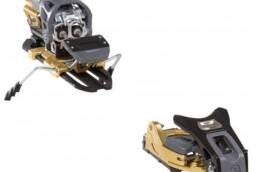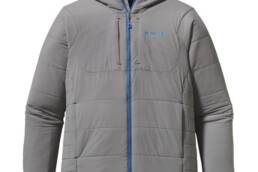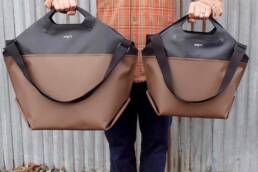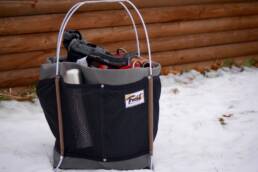“What is the Dynafit Beast 16 for?” That’s, more often than not, what I hear when this binding comes up in conversation amongst ski-tourers and alpinists. I’m here to tell you that this is much more of a paradigm problem than it is an issue with the actual binding. The Beast is Dynafit’s attempt at a touring solution for a different segment of riders, and that’s why you—my three-per cent-body fat-skimo friend—don’t get it. This isn’t a touring binding you can ride resort with, it’s an alpine binding you can tour with.

First, let’s dispel the myth that there’s no market for this thing: The Duke and the Guardian have been dominating the freeride-touring scene for years—there are a lot of people that want retention and skiability but to also be able to do sidecountry and tour. That’s a fact.
The problem is that those sidecountry rippers haven’t yet moved to pin boots, they’re still in DIN soles. Some are slowly making the transition as boot technology improves, but freeriders generally think they need hard, stiff alpine boots. I’m not arguing, but I am going to point it out as the main reason the Beast hasn’t gotten the market penetration it deserves.
If you have pin-tech boot that you’re happy with—of which there are now starting to be some legitimate offerings—the Beast 16 skis better than any alpine binding I’ve ever tried. I mounted mine on a set 190cm Elan Boomerangs that are 120mm underfoot, and I have a set of Rossignol FKS mounted on another pair of the exact same skis in the exact same place.
The Delta—the height difference between heel and toe, resulting in ramp angle—on the FKS is 9mm, and on the Beast it’s 6mm. With my FKS, I use a Dalbello Krypton Pro boot. With my Beast 16, I use the Dynafit Mercury. The resulting forward lean is almost identical, and being that the Mercury skis almost just as well as the Dalbello, I almost can’t tell the difference. I’ve actually thought about trying to ski with one on each foot to try it out.

My first test: two days on Whitewater in Nelson, BC during the iciest part of the season.
Result: my skis are stupid big for normal day use and I can’t really feel the binding—I need to stop pretending it’s still five years ago when every one skied huge skis full-time just to prove they could.
My next test: Ten days in La Grave, France. I didn’t want to pay extra baggage and could only bring one pair of skis. I needed something I could tour with, ski-mountaineer, and also hammer hardpack. My normal Dynafit Radicals are on smaller skis, but those skis are fully rockered and the Radical has 15mm of Delta, which has always made me feel pitched too far forward on hardpack—not confidence inspiring for ski-mountaineering.


Result: I elect to bring the big skis with Beasts, and nail it. The edge-to-edge strength of the Beast 16 is stronger than even my normal alpine bindings, I feel stable and secure despite the fat skis. The forward pressure of the binding does a lot to help with this, too.
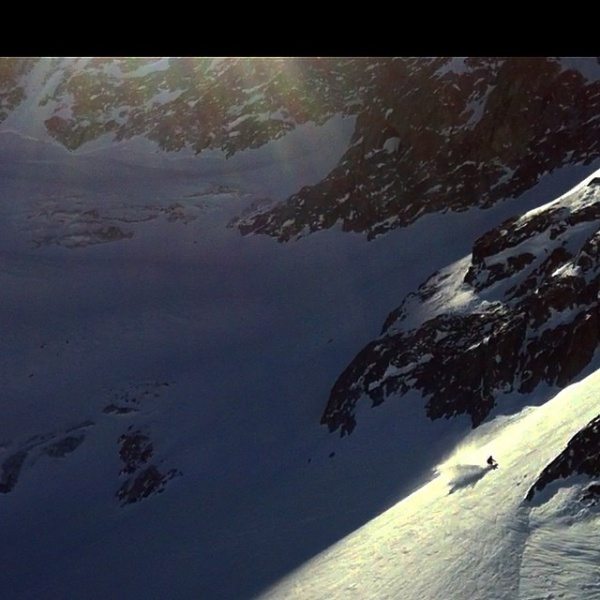
Touring test: During my visit I do several tours, one of which is 1,800 metres straight up the Tabuchet Glacier to stay at the Refuge de L’Aigle.

Results: They tour beautifully. It would be nice to have one more riser position, but not crucial. Technically they don’t have a flat mode, but I can’t really notice it. Because of the relaxed Delta, even the first riser feels pretty neutral. The second is what you’d want in most situations, and if it gets really steep you might miss the third position that’s absent.



Downsides: Oh yes, there are some! They are a royal pain the ass to step in and out of, or to transition with. If they’re clean, you can step in pretty easy, but any kind of granular of sticky snow clogs all the fine mechanisms of the toe really fast. This year Dynafit added a “toe-box adjust” to help with this. You manually close this tab once you’ve stepped in, and if it doesn’t want to snap shut on its own you can use this to do the job. It’s also a good indicator you’re in properly. I always take a second look to make sure it’s down right before I ski.

If you have patience, this is fine. Sometimes on a sketchy perch it means you have to be more careful and deliberate about placing your skis so you step into them, or stomping out a platform. On occasion, it’s been frustrating, but an easy compromise for the confidence I have once in them. I’m tempted to try the Beast 14, as I think the toe will be easier to step in, but I’m not sold that it’s quite as solid.
Next, the heel riser that holds down the brakes for tour mode requires Thor’s hammer to dislodge. When trying to get back to ski mode, I have to put both boots on my ski and use my pole, with both hands, to lever it back up. But you’re probably not using these for traverses, so if you have to do that twice or even three times a day, it’s an easy compromise. Supposedly there’s a technique, but I don’t have it yet…
Pow-day test at Kicking Horse: The next thing I’ll say about them is that they can be stressful on a pow day. I don’t feel like I need to use my alpine set-up anymore, this one performs just as well but gives me the liberty to tour. The Beast is low to the ski and more solid and tourable than any frame binding, plus it’s lighter and doesn’t deaden the ski. However, when you’re rushing to get first tracks, the extra 10 to 15 seconds it takes to clear your boots and step in can sometimes lead to anxiety as others scoot ahead of you.
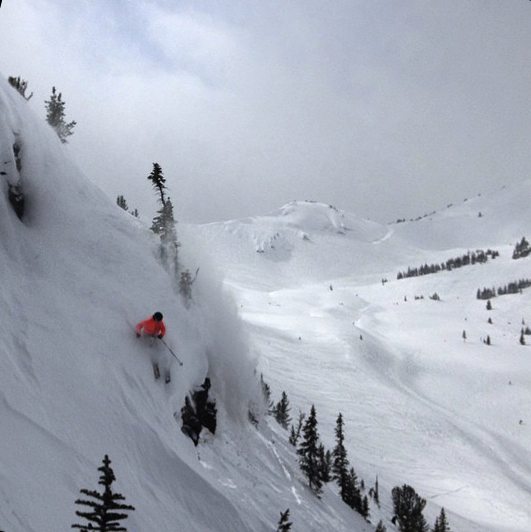
The Beast 16 is DIN certified to release like and alpine binding and I’ve had plenty of confidence to spin and huck cliffs with them, but I haven’t really crashed yet. I know some people who say the release feels natural, so I’ll have to give’er a little harder to find out. Maybe I’m getting a little old…

At $849.95 CDN, it’s a bit of a hit, but it really is your best do-all freeride solution if you have pin boots you’re happy with. I think this binding with either the new Dynafit Chugach or Hokkaido could be the ticket, as they were designed with each other in mind. Stay tuned for more.
Matt Coté
Matt is the associate editor at Forecast. He's been penning and editing ski, adventure and mountain culture-based stories for over a dozen publications for the last decade.
Related Stories
Threads MCTV (Gear Review)
Mountain Culture TV: Threads This CMC gear review was shot in Squamish and Whistler B.C. with three high tech…
GEAR REVIEW: Patagonia Nano-Air Jacket
You may notice we don't review a ton of gear on here, but when we stumble across certain products we feel we…
Honest Review: Eqpd Gear LastBag
Is this the last bag you'll ever need? Our online editor and his one-year-old try to destroy the latest offering from…
Gear Review – Redington’s Prowler Boots
The Felt vs. Rubber-Sole River Test You can cast a fly with a stick, catch a fish with a chunk of hot dog, and spend…
Honest Review: Truckit Bucket Tote
Wewerke Design says its Truckit Bucket will forever change the way you haul gear. Editor Vince Hempsall tests to see if…
Review: Hitcase PRO
Drop it in snow, shoot underwater, change lenses in a snap--mount it to your head even--the Hitcase PRO does it all.…


